You are walking down the Red Light District in Amsterdam, except, unusually – for one of the most popular tourist destinations in the world – there’s hardly anyone about. As you peer through the windows dimly lit with red lamps, you see three real people, inviting you to join in with something that only exists in your wildest fantasy. You could stand there and watch, but you decide not to take part, because you know there are many more options that await you in this alluring, slightly surreal city.
This is the concept of a cross-platform immersive project currently being made by a team in Australia. While the start-up will share some of the same technical innovation as many game developers, Dream Channel is “definitely not a game”, founder Jonny Peters told SEXTECHGUIDE over video call from Sydney, where the business is based. Peters describes the cross-platform extended reality (XR) experience as a “next-generation, immersive entertainment channel”, where the real world and dream world meet.
If this sounds like something that could come straight from a film, that’s because it did. Peters has previously worked as a filmmaker and Dream Channel originally started as a 2D short movie, with the story following a company from the future that trades dreams on the black market (spoiler alert – the dreams that fetch the most money are the erotic ones). The XR Dream Channel’s narrative will follow a similar concept. Users will have the option to watch 2D episodes of the overarching story and vote for their favourite ‘stolen dreams’.
That is the future. At the moment, you can explore the virtual world in VR or on a web browser.
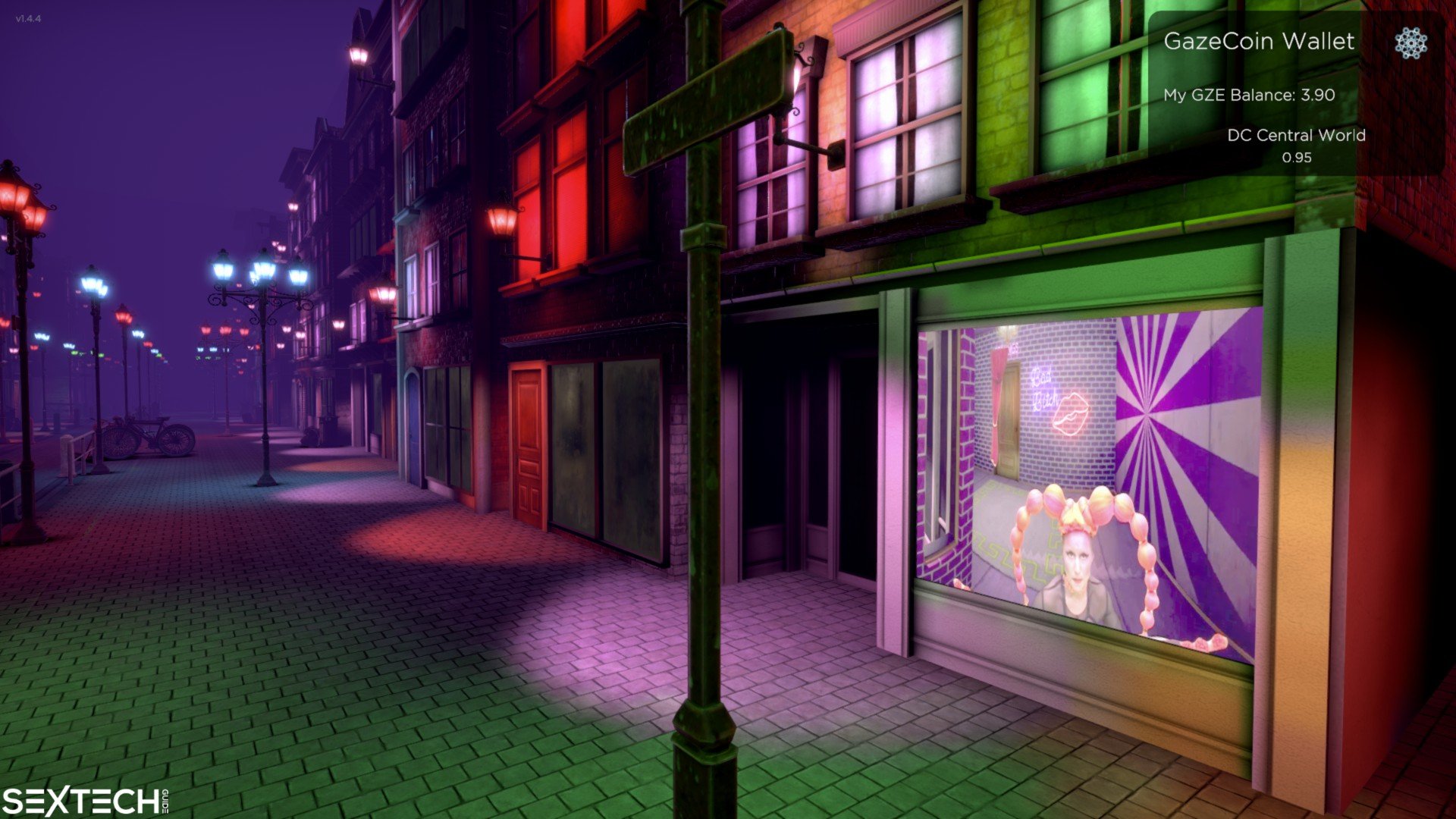
While Dream Channel is definitely not a game, the concept of a virtual Red Light District isn’t new. There’s Red Light Center, an adult city within virtual world Utherverse, a MMORPG (massive multiplayer online role-playing game) that’s been around since 2006 and had an estimated 1.5m users in 2018.
Last year, a small sex theatre in the actual Red Light District screened a 5D porn experience for tourists and locals wanting to fully immerse themselves in the city’s famous vices, without actually going for it for real. The concept is clearly popular, and the ‘windows’ along the streets serve a useful function within the context of the Dream Channel world.
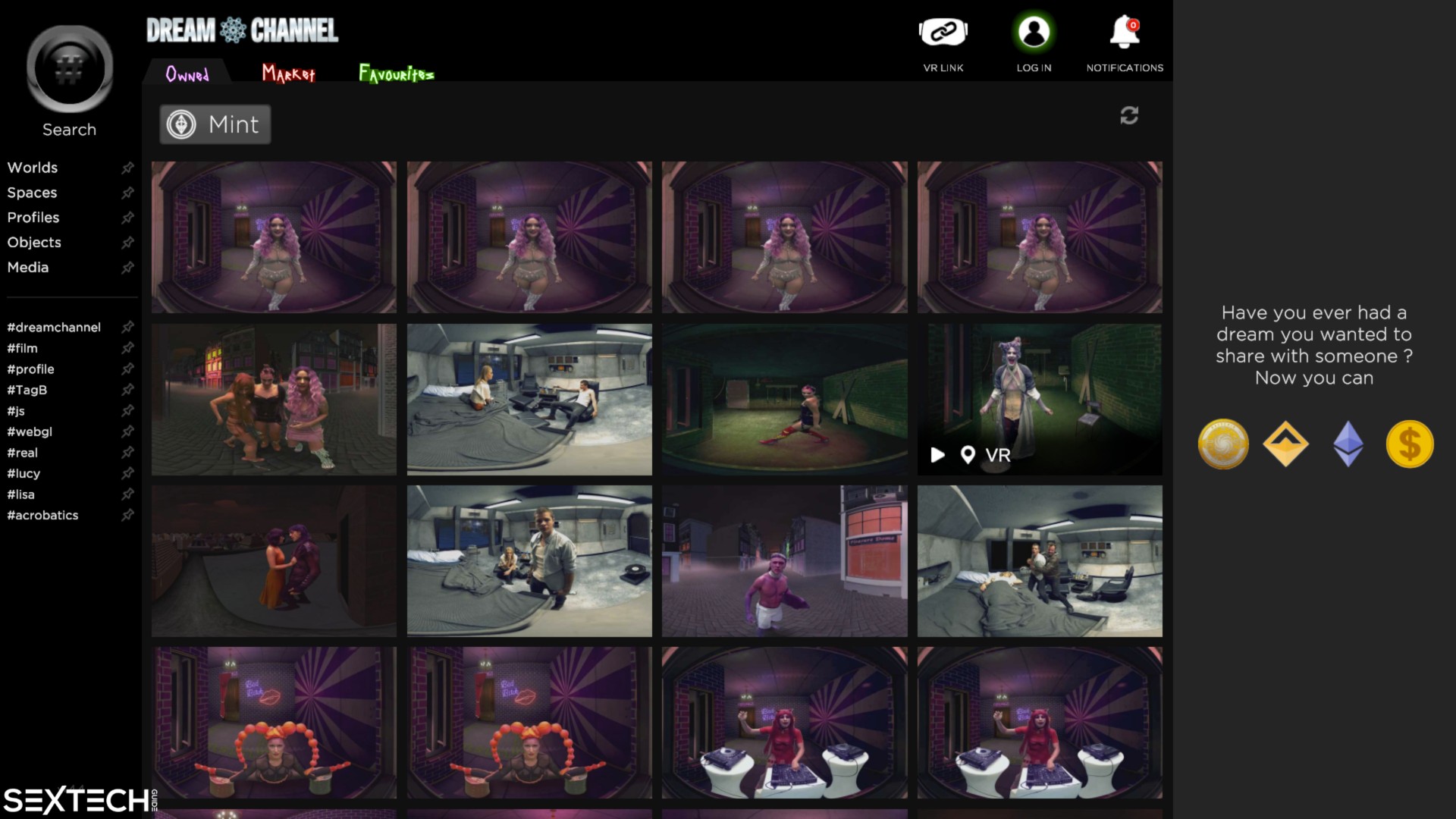
Peters continues: “These windows you look through are entertainment channels, you step inside and it’s hosted by a character, who’s offering certain things.That’s what you find yourself immersed inside of.”
Producing a dream world
Dream Channel is a platform in extended reality, XR, an umbrella term for virtual, augmented and mixed reality. That is, you can enter this world via a VR headset, but it’s also accessible online, as a desktop game would be. The characters inviting you to join in, who are placed inside this world, are from footage of real actors who’ve been filmed against a green screen.
“Stage one is all about the content, it’s content you might’ve seen before, but it’s presented in this different kind of way,” Peters says.
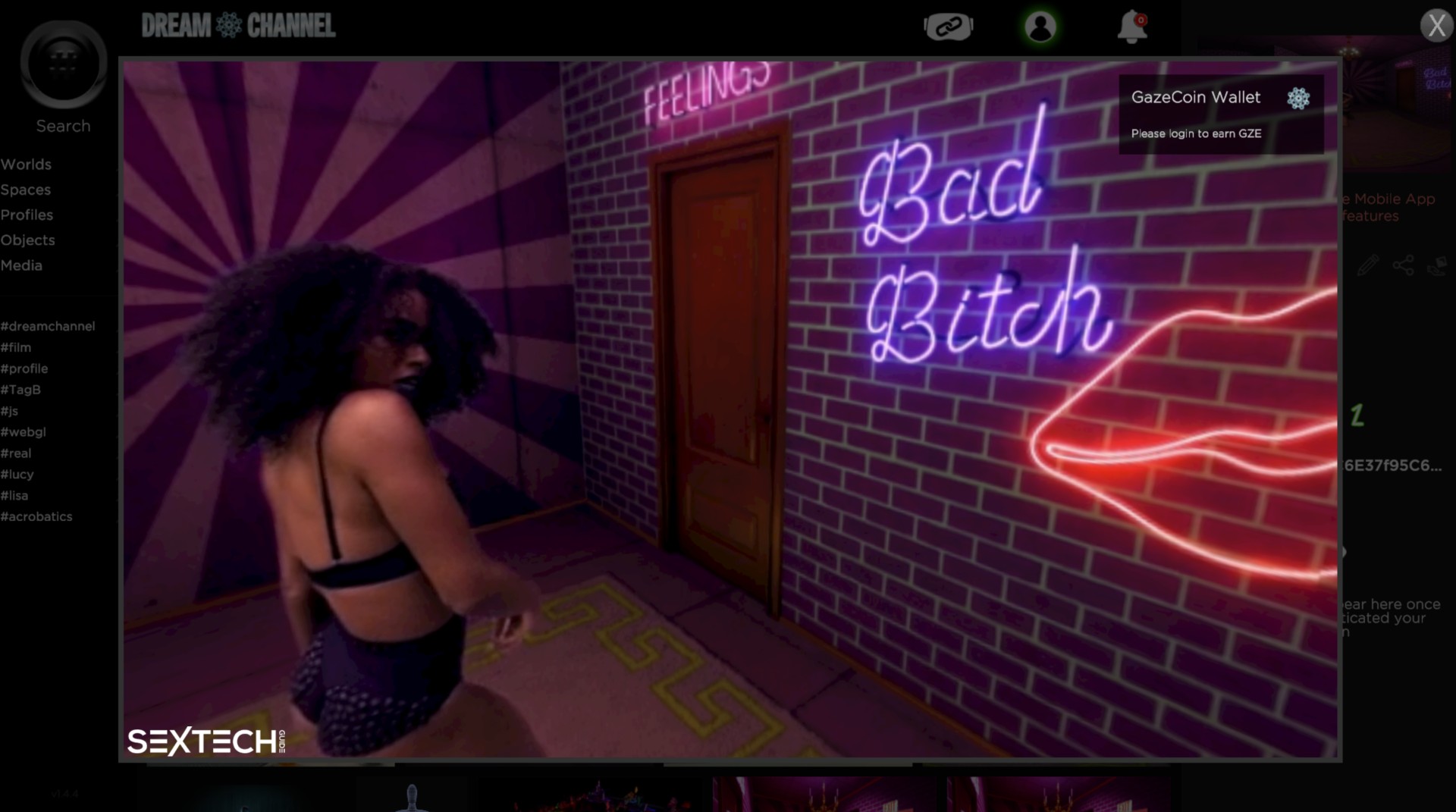
This means Dream Channel is offering something pretty exciting for the VR porn enthusiast: rather than scrolling through video options on a homepage, it’s essentially an immersive virtual city where you can embody a character and choose the content you watch that way. Though, it’s not aimed at being a platform only for VR porn.
Filming the adult content formed the first phase of Dream Channel’s production. Peters says he’s been in talks with VR porn production houses such as BaDoink about providing more content “to get the ball rolling”, so the Dream Channel team doesn’t have to make it all themselves. The first stage of the project is also about getting people to “understand the idea of the window”, Peter says.
“We’re not going to charge anyone for anything yet… you can cruise around and jump in and out of these windows, and then we’ll get feedback from that and go from there,” he adds.
Crypto-powered world
When the Channel is in a place to charge people, however, it’s going to do so via one of Peters’ other projects – GazeCoin – a blockchain API that uses eye tracking to pay for services with cryptocurrency. The blockchain API allows any web-based video system to use ‘gaze’ (that is, prolonged visual focus) to trigger payment. The concept of ‘gaze’ as a trigger is “ubiquitous across VR”, says Peters: “all we’ve done is tap into that existing mechanism”.
He adds, as an example, that a 40-minute video offered within the Channel might cost $3 to watch, but if you stop watching halfway through, it’d charge you half of that. So you only pay for the duration of which the video captures your attention.
Peters, who founded GazeCoin in 2017, comments: “It obviously [has] a bigger lifespan, bigger than the Red Light District, but it’s definitely the proof of concept for it. As with anything in tech, it proves itself in adult quite quickly and really shows what it can do. Adult’s a good place to start.”
In terms of monetization, there’s also plans for the world to house in-Channel adverts, and for potential advertizers to create ‘attention-driven’ campaigns.
Super AI holograms
The second phase of the project is the development of technology that allows the user to generate their own holograms, the evolution of which is where Peters’ “real focus” will be for the project going forward.
“I call it Super AI,” he says, “revolving around the idea that the hologram will learn to be you – or at least be like you.”
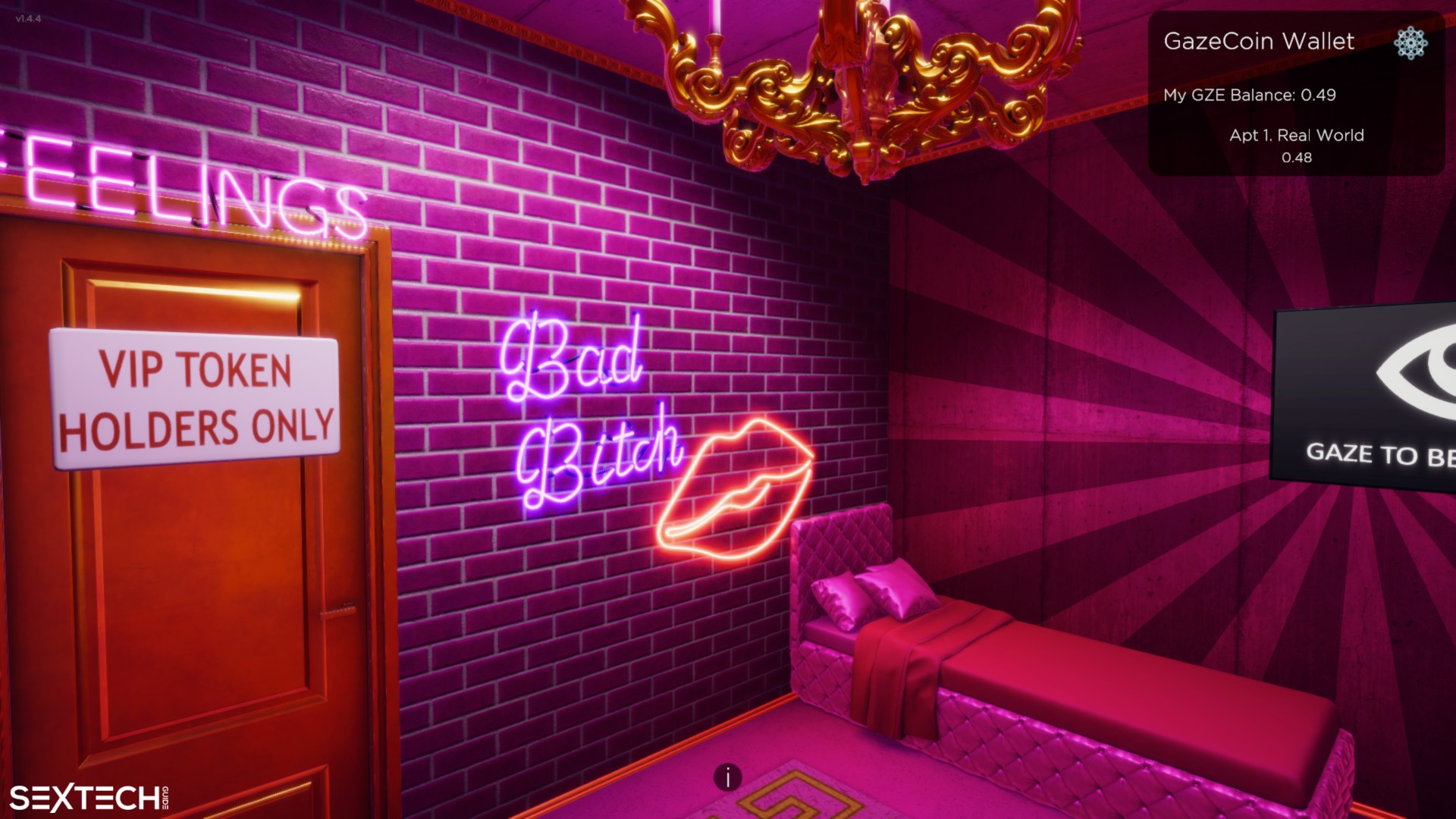
Empathy has been a key aspect for Peters’ vision of holograms within the game. “Having empathy for that thing [your hologram] is very important,” he continues. “Remember Tamogtchi? We had empathy for them, we wanted to care for them, feed them. It became huge because it tapped into human nature’s condition to care for things. It’s how we are, right? The idea came from that… this hologram needs you to live, and things like that.”
The use of blockchain technology will mean that every hologram is unique and the user has full control over it. There are also plans to be able to ‘trade’ your hologram with others if they want to buy it, adding more commodifiable features to the ‘marketplace’ of the channel. Peters says this is “another interesting tech element that works in a crypto-powered world. While it’s early days with this, I can see it working pretty quickly.”
Where can it go?
When the Dream Channel team exhibited at an Australian trade show a few years back, the majority of interest was from female visitors, a demographic less likely to come to mind when marketing VR porn to online users.
“This is so much deeper than watching porn, this is immersing yourself in this totally, mentally-driven world that could go anywhere and it’s engaging people in such a different way,” Peters says.
“I’ve worked in the adult industry before, and I could see they had a very male-focused mantra, but my sensibilities have always been in trying to create an experience-driven entertainment channel that’s not just targeted at men, or women, but targeted at everybody.”
While the project is still a work-in-progress, users can now begin to try it out via dreamchannel.io. If you want to earn ‘GazeCoin’ while you browse around, you’ll need to create an account via the mobile app for Android or iOS.
First impressions are that it’s certainly innovative as a concept and there’s clearly demand from people to escape into virtual worlds where they can live out their fantasies. Clearly, safety needs to be prioritized for it to take off properly, but as a blue-sky idea trying to push the boundaries of VR adult content further and further, it’s definitely heading in an exciting direction, albeit furthering an idea that has existed for a long time already.
Read More: 9 VR porn games you can play today







Leave a Reply